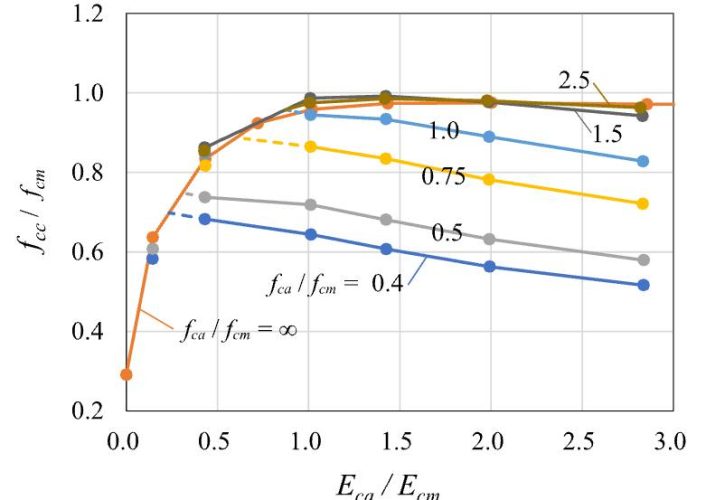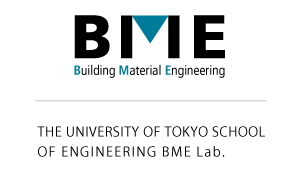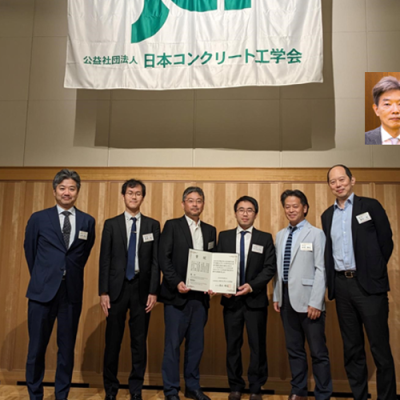A new paper has been published by JACT.
How the compressive strength of concrete is determined has, in fact, remained largely unclear—until now. Personally, I feel that this paper has significantly improved our understanding of it.
We clarified the sequence of crack initiation, propagation, and strength determination mechanisms in cylinderical concrete specimens based on the Young’s modulus ratio between aggregate and matrix, and visualized it in the chart below. For this, the rigid-body spring network model helps us a lot. By using the Young’s modulus ratio and strength ratio between aggregate and matrix as parameters, this diagram derives the ratio of strength of concrete to the strength of matrix, covering all types of mixtures—from ultra-high-strength concrete to normal concrete, and from high-performance andesite aggregates to recycled aggregates or even pores.
How can we increase strength using recycled aggregates?
How can we improve performance by using recycled materials as aggregates?
How can we optimize from the perspective of material utilization?
The answers are captured in this diagram (in some parts).
The paper is published in JACT and is Open Access—please take a look!
I. Maruyama, S. Sugimoto, Impact of aggregate physical properties on the compressive strength of concrete, J. Adv. Concr. Technol. 23 (2025) 223–243.https://doi.org/10.3151/jact.23.22undefined
Role of aggregate on concrete strength is clarified.














